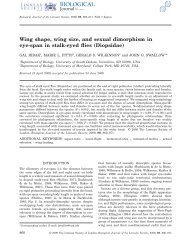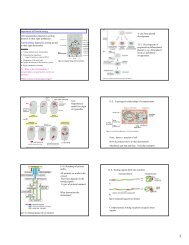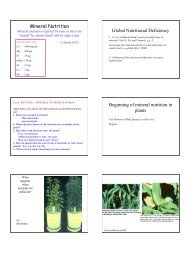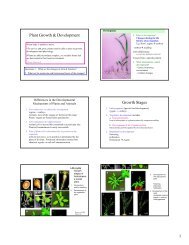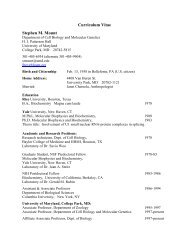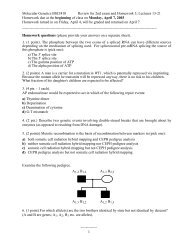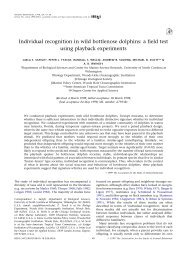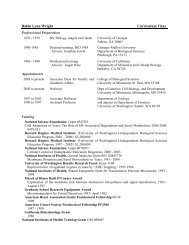Carnivorous Plants and Their Prey
Carnivorous Plants and Their Prey
Carnivorous Plants and Their Prey
You also want an ePaper? Increase the reach of your titles
YUMPU automatically turns print PDFs into web optimized ePapers that Google loves.
(12). When an insect or other invertebrate l<strong>and</strong>s on the trap, it becomes ensnared in a quagmire<br />
of mucus. As the animal struggles to free itself, it becomes even more coated in the mucus which<br />
leads to complete incapacitation <strong>and</strong> eventual suffocation (1, 12). Drosera sundews illustrate the<br />
method of prey capture <strong>and</strong> consumption in sticky flypaper traps with an added ‘twist’. Sundews<br />
have their leaves modified into tentacle-like structures covered with mucus-laden hairs. The hairs<br />
are tipped with an attractive droplet of nectar that draws insects in (10, 54). Movement of prey<br />
insects along the hairs initiates electrical impulses along the tentacles <strong>and</strong> triggers surrounding<br />
hairs to fold in on the struggling victim (16, 54). The curled tentacles provide additional contact<br />
points for digestive gl<strong>and</strong>s to break down the prey (12). Digestive enzymes produced by the plant<br />
begin the process of tissue degradation at the site of prey capture (12, 54). In genera like<br />
Pinguicula, leaves do not coil around the victim; instead, the prey is simply immobilized in the<br />
mucus (12).<br />
Spring Traps<br />
While pitfall <strong>and</strong> sticky flypaper traps are quite widespread across genera, the most<br />
common type of trap is the spring-trap design (15). This is due to the large number of<br />
bladderworts (Utricularia spp.) – the greatest number of species of carnivorous plants – with such<br />
trapping mechanisms. The spring-trap carnivorous plants are housed in two families, the<br />
Droseraceae <strong>and</strong> Lentibulariaceae. The monospecific Dionea <strong>and</strong> Aldrov<strong>and</strong>a are placed in the<br />
Droseraceae while the Lentibulariaceae contains about 280 species of Utricularia, one species of<br />
Biovularia, <strong>and</strong> two species of Polypompholyx (1, 15, 53). Biovularia species are sometimes<br />
included in the genus Utricularia (55).<br />
Spring-traps differ from genus to genus <strong>and</strong> include a variety of forms as diverse as the<br />
“bear trap” design of the Venus flytrap (Dionea muscipula) or the waterwheel plant (Aldrov<strong>and</strong>a<br />
vesiculosa) <strong>and</strong> the suction traps of the aquatic Utricularia species (12, 15). The variance in trap<br />
construction launches a disparity in trap nomenclature. For example, spring-traps are sometimes<br />
referred to as active steel-traps with Dionaea <strong>and</strong> Aldrov<strong>and</strong>a or mousetraps in the Biovularia,<br />
20




